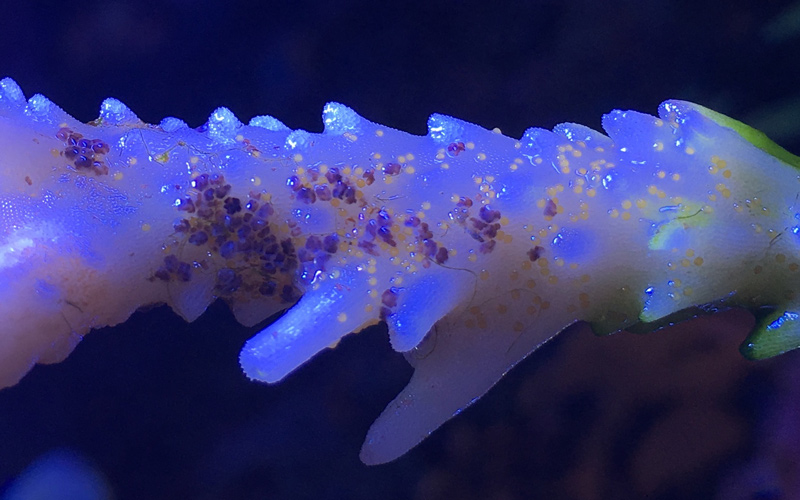Hey all!
I’ve been dealing with a situation for some time that has me scratching my head. Somehow I’ve managed to contract AEFW in my tank. Not just any AEFW but the new variety that has started showing up in the hobby:

I first noticed them about 6 months ago and I really hadn’t added any corals for some time.
Now, I’ve dealt with standard AEFW in the past and they were fairly easily beaten: added some wrasses and dosed flatworm stop. Done deal.
These things however are something else, much more voracious feeders and multiply a lot faster. They can tear through a large colony in a matter of days. You don’t see the standard bit marks that’s usually associated with flat worms but it rather looks like RTN.
Now with dosing flatworm stop, adding more wrasses and lowering the temperature I’ve managed to halt their advance somewhat but not close to winning.
As I have a fairly large tank with a lot encrusted corals tearing it down and placing everything in QT really isn’t an option. That leaves biological control (and chemicals. Fenbendazole is a fairly common treatment here in Sweden against the common variety with a high degree of success rate but it’s fairly risky).
Long story short: has anyone any experience with these thing and perhaps has found a silver bullet in terms of fish/inverts. I currently have a sixline , black leopard , “standard” leopard , Timor, radiant and 2x yellow coris in terms of wrasses as well as some springeri damsels and peppermint shrimp that could be potential predators. I can’t say that they’ve made much headway honestly.
So, any thoughts on other possible additions that might provide some benefit in terms of control?
I’ve been dealing with a situation for some time that has me scratching my head. Somehow I’ve managed to contract AEFW in my tank. Not just any AEFW but the new variety that has started showing up in the hobby:

Is This a NEW Acro Eating Flatworm? | Reef Builders | The Reef and Saltwater Aquarium Blog
Coral pests are never fun, especially the type that are hard to remove with a simple dip. But undesirable parasites are even scarier and coral life-threatening when we don’t even know what we’re…
reefbuilders.com
I first noticed them about 6 months ago and I really hadn’t added any corals for some time.
Now, I’ve dealt with standard AEFW in the past and they were fairly easily beaten: added some wrasses and dosed flatworm stop. Done deal.
These things however are something else, much more voracious feeders and multiply a lot faster. They can tear through a large colony in a matter of days. You don’t see the standard bit marks that’s usually associated with flat worms but it rather looks like RTN.
Now with dosing flatworm stop, adding more wrasses and lowering the temperature I’ve managed to halt their advance somewhat but not close to winning.
As I have a fairly large tank with a lot encrusted corals tearing it down and placing everything in QT really isn’t an option. That leaves biological control (and chemicals. Fenbendazole is a fairly common treatment here in Sweden against the common variety with a high degree of success rate but it’s fairly risky).
Long story short: has anyone any experience with these thing and perhaps has found a silver bullet in terms of fish/inverts. I currently have a sixline , black leopard , “standard” leopard , Timor, radiant and 2x yellow coris in terms of wrasses as well as some springeri damsels and peppermint shrimp that could be potential predators. I can’t say that they’ve made much headway honestly.
So, any thoughts on other possible additions that might provide some benefit in terms of control?



















